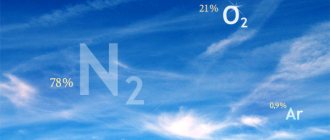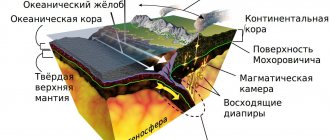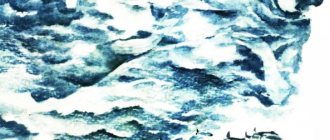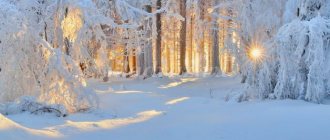Water cycle in nature
L.N. Tolstoy
Where does the water go from the sea?
From springs, springs and swamps, water flows into streams, from streams into rivers, from rivers into large rivers, and from large rivers it flows into the seas. From other sides other rivers flow into the seas, and all rivers have flowed into the seas since the world was created. Where does the water go from the sea? Why doesn't it flow over the edge?
Question: Where does the water go from the sea? Why doesn't water flow over the edge?
All living things constantly need clean water. And the result of most reactions is dirty water. Where does nature supply endless supplies of clean water? This is why the water cycle exists in nature. Water, as you know, evaporates from the surface of reservoirs in almost any weather. But in the summer, in the heat, this process goes much faster and more intense.
Try to make your own diagram...
This endless cycle allows us to get by with the world's water supplies.
Checking the task...
And more about the water cycle HERE
If you fantasize a little, then you and I drink the same water that the soldiers of Alexander the Great drank and swim in the same waters in which brontosaurs splashed and ichthyosaurs of the Jurassic period swam. It’s just that over millions of years, this water has traveled millions of times along the very circle that we call the Water Cycle in Nature.
Do you know the secrets of water...
We understand that nature really needs water, which means it needs to be protected!
Experimenting in water Fun experiments for children “Water OR Archimedes’ Laws”
Verification work
Some facts about water.
- In terms of name, water has many synonyms: hydrogen oxide, hydrogen hydroxide, dihydrogen monoxide, oxidane, dihydromonoxide, oxygen hydride.
- In small volumes, water is colorless. Thick layers of water have a bluish-green color.
- There are about 16 billion km3 of water on our planet—that’s 0.25% of the Earth’s mass. Of these, 0.2 billion km3 are lakes and rivers, 13 thousand km3 are atmospheric water vapor.
- 97.6% of known free water is found in the world's oceans. There is still 10-12 times more water in the Earth's mantle than in the ocean.
- On average, a person consists of 70% water, a jellyfish is 96%, and algae is 99%. A baby contains significantly more water than an older person.
- Human bones contain 22% water, blood - 83%, and the vitreous body of the eyes - 99%.
- A person, in a sense, is a hydraulic machine, therefore stagnation of fluid in different parts of the body or obstacles to its free movement necessarily cause diseases.
- About 1 ton of water passes through the human body every year.







